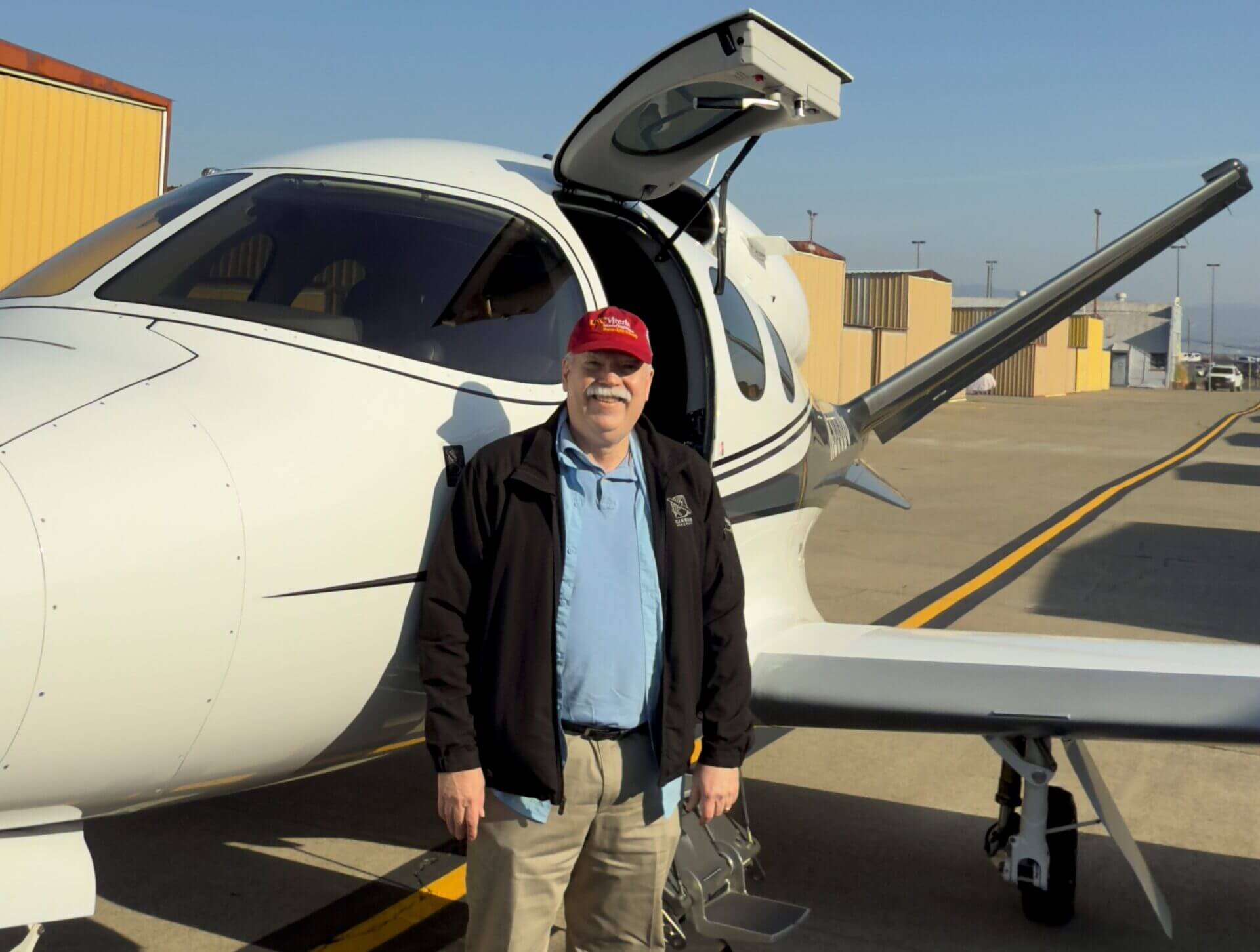USC Aviation Safety and Security Program Certificate Graduate Writing for Flying Magazine
USC Aviation Safety and Security Program Staff | December 18, 2024
General aviation writer, podcaster, and 2008 National Certificate Flight Instructor of the Year hopes to bring Program's lessons to General Aviation

Max Trescott stands next to a Cirrus Vision SF50 "Vision Jet," one of the aircraft Trescott specializes in as a flight instructor.
Photo Credit: Max Trescott
Max Trescott is an independent flight instructor who specializes in teaching in Cirrus aircraft including the SF50 Vision Jet. He also hosts the popular Aviation News Talk podcast, which focuses on general aviation (GA) and safety. He recently started writing articles for FLYING Magazine and beginning in January 2025, he will write a monthly column called "MAX Impact."
He first came to USC a year ago with plans to only take the Aircraft Accident Investigation (AAI) course. Yet, just six months later, he completed the Aviation Safety and Security certificate program. Max says, “I came to USC because I spend a lot of time talking about GA accidents on the podcast, and I wanted to make sure that I knew what I was talking about. But I found the experience so enriching, I decided to come back and complete the program.” He felt he learned the most from the Aviation Safety Management Systems (ASMS) course and wants to bring these concepts to more GA pilots.
In the ASMS course, he met USC Instructor Dr. Quay Snyder, who recently appeared as a guest on episode #359 of the Aviation News Talk podcast. Dr. Snyder spoke on the critical role of sleep and fatigue management, especially in aviation. He noted that research indicates a strong negative correlation between the amount of REM sleep and longevity, with lower levels of REM sleep correlating with a higher risk of early death
One of Trescott’s favorite topics is somatogravic illusion, which he wrote about in an article that appeared in the December 2024 issue of FLYING magazine and will later appear online. He says this is one of the least understood human factors in aviation, and it continues to kill pilots from the smallest to the largest aircraft, with Atlas Air Flight 3591, a Boeing 767 cargo plane, as of the most famous examples. He says the October crash of a Beech Baron that killed all five pilots on board after it took off from Catalina Island at night bears the hallmarks of somatogravic illusion.
As an aircraft accelerates, somatogravic Illusion leads pilots to perceive their heads are tilting back, and pilots interpret this as a climb. Since they perceive that the aircraft is climbing, they do not pull back on the yoke as much as they should. Instead, they fly straight and level or push forward on the yoke, creating a descent. While pilots feel the same sensation in clear-weather visual meteorological conditions (VMC) and low-visibility instrument meteorological conditions (IMC), pilots in VMC may use the horizon as a reference and not lose their orientation.
According to Trescott, if you wish to safely experience somatogravic illusion, do the following the next time you fly as a passenger on an airliner. Just before the takeoff roll, note the relative pitch angle of the floor and close your eyes. Keep your eyes closed throughout the takeoff roll and as the aircraft accelerates through the initial climb. With your eyes closed, imagine the pitch of the floor relative to the ground, then open your eyes. Typically, because of somatogravic illusion, you’ll perceive the aircraft as having a higher pitch than it actually does.
Along with Flying magazine, you may find Max Trescott at Aviation News Talk, where he publishes a newsletter, the Aviation News Talk podcast, and on YouTube.

